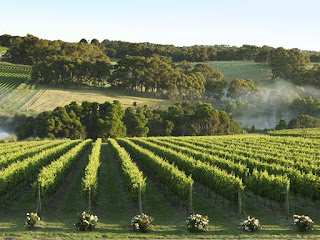In the rapidly evolving world of ag tech, there are many options—too many
in the eyes of some observers—from which a farmer can make choices when he/she
is looking at ways to manage water usage decisions in a more precise
manner. Perhaps the biggest questions
for most farmers when considering a piece of ag tech are how is the data useful
for me, and how does it add value?
Soil moisture sensors are not
new, nor are they particularly high tech when compared to some of the precision
ag tools that are available today; however, it has been my experience that, in
many irrigated areas of the US and around the world, their use is not that
common—unless there has been a push by, say, the local Natural Resources
Conservation Service, or others—to increase their usage. Many irrigated farmers still rely on the time
honored method of using a shovel or soil probe, along with looking for areas of
crop stress. I find it interesting that,
in this time where most farmers are very conscious of precise decisions with each
step of the way for producing a crop, soil moisture sensors are not in wider
use.
All of this came full circle
for me during a recent NRCS sponsored event on soil and water
conservation. The gentleman who gave a
presentation before mine was a researcher from Kansas State University who
showed a slide that captured the essence of why these sensors are such an
important tool in the toolbox. Last
year, K State had a pivot field (120 acres), of corn, with all cultural
practices being the same across the field.
The only difference was that one side had soil moisture sensors
installed, while on the other side, irrigation decisions were made by the
“shovel method.” Records were kept on irrigation water
usage. The crop yield difference was one
bushel per acre between the two halves of the field. But the water usage difference was
significant—5.8 inches applied on the part with the sensors, and 13 inches on
the side where a crop consultant used hand check methods!
There is no doubt that many
irrigated farmers have taken steps to improve efficiency of water application,
whether by using a drip irrigation system, or by updating center pivots with
LEPA or LESA installations. Further, an
increasing number of farmers are using weather data to help in deciding when
irrigation is needed, and how much.
That said, there is a missing ingredient in the equation. And
that is to know when to irrigate based on available soil moisture. If you
think of that stored soil water as a bank, consider that prudent folks do not
decide how much money to spend on something without knowing how much they have
in the bank. It is the same concept,
although this time it is with water.
There are a number of choices for
soil moisture sensors, and some of the considerations for the decision include
cost, which can range from a few hundred dollars to over $1,500, ease of
installation, ability to capture data from the sensor remotely, the format of
the data, and the soil types across a field.
As far as the latter point, in theory one should have soil moisture
sensors in use on all soil types across a field if one holds true to the idea
of variable rate irrigation. But the
practicality of the cost of having multiple sensors comes into play. I have worked with farmers who will use the
approach of, say, two sensors in a field to pick up the majority of the soils
types, and then extrapolating from the data that is generated to make decisions
for the field as a whole. It would be
fair to say that, with higher value crops, such as almonds, there is a strong
case for using sensors in almost all soils types; almonds are very sensitive to
over or under watering, and using a “water prescription” that is too broad
based can lead to uneven plant conditions, and yields, across a field.
As far as the format of the
data, it is important that the grower obtain it in a way that does not require
elaborate interpretation; in other words, the sensor should indicate available
soil moisture, and whether there is a need to irrigate. Similarly, capturing the data through dashboards
that the farmer may be using for other purposes is possible with some sensors,
and it would be important for a farmer to give this consideration in the
purchase decision, especially where multiple fields are involved, and time for
data collection is constrained.
In this time of much technological evolution in agriculture, what must
not get lost is the usefulness of a relatively low tech tool—the soil moisture
sensor. As with any kind of changed
practice in agriculture, this one requires an adjustment in mindset. Breaking an old habit, in this instance,
water application decision techniques, is not easy, but the proof is out there,
from the aforementioned K State study, and elsewhere, that the soil moisture
sensor is a tool of much value. There
are opportunities for cost sharing and other funding for the sensors via the
local NRCS, and certain other conservation organizations.
---
Benedict T. Palen, Jr., is a fifth generation farmer with substantial
experience in many phases of agriculture, and especially with regard to soil
and water conservation techniques. He has provided consulting services to farms in the USA, Africa, and in the Middle
East. He can be reached at
ben@agmgmtpartners.com



No comments:
Post a Comment